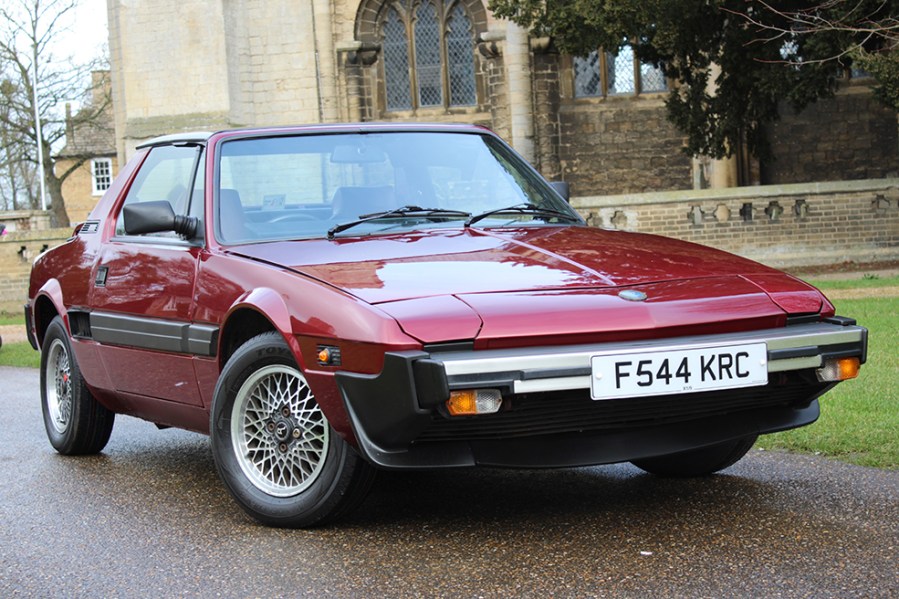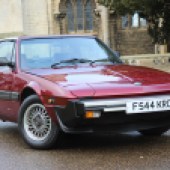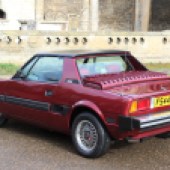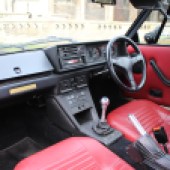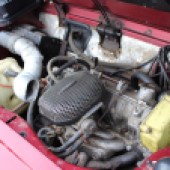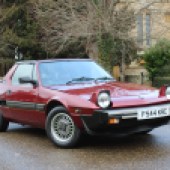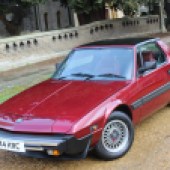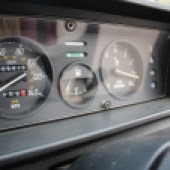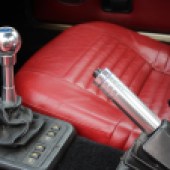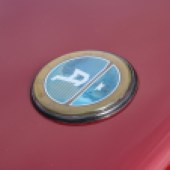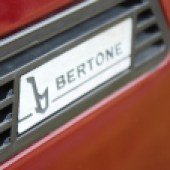Can a late-model X1/9 provide a tempting alternative to a traditional British sports car? We get behind the wheel to find out
Words and images: Jack Grover
The Fiat X1/9 was really a Bertone product through and through. The idea started as a Bertone concept car based on an Autobianchi, intended to resemble a small speedboat. Fiat picked up the idea and turned it into a modern, accessible sporting roadster based around the powertrain and running gear of the Fiat 128 saloon, but with the drivetrain mounted between the rear wheels rather than the front. The angular wedge shape, low waistline and pop-up headlamps of the concept remained, to which was added a B-pillar roll-over hoop and a removable targa roof panel that could be stowed in the specially-shaped forward compartment.
The result was one of the few genuinely new sports cars to be launched in the 1970s and one which immediately drew praise for its sharp handling, good balance and useful veneer of practicality thanks to its saloon-like ride, all-weather roof arrangement and large boot, while the admired Fiat Lampredi OHC engine was a world apart from the all-iron pushrod units found powering many ageing British sports cars.
From the start of production in 1972, the body was produced at Bertone before being shipped to Fiat for final assembly. The original 1.3-litre engine was replaced by a more powerful 1.5-litre unit in 1978, by which time official production of right-hand drive versions had begun. Fiat dropped the model in 1982 but Bertone took it on, now receiving mechanical parts from Fiat to fit to the bodies it was making. Sales of the Bertone X1/9 ended in 1989 after around 160,000 had been made in total, of which around 120,000 were sold in the USA.
It was in 1982, a decade after the debut of the X1/9, that Bertone took over production of the mid-engined sportster from Fiat. The company responsible for the look of the car, as well as its bodyshell production, was also now doing final assembly, with the X1/9 suddenly wearing Bertone rather than Fiat badges. And it proved to be a success, extending the car’s career by seven years. Around 19,500 X1/9s were built by Bertone during that time.
The X1/9 was still sold via Fiat showrooms in the UK, and this example’s V5 document lists it as a Fiat – despite it being from 1989, the final year of production. With just over 65,000 miles on its odometer, plus stamps in the service book up to 62,291 of those, this particular car has clearly been well looked after. The specific history is rather patchy, but it was treated to a heavy overhaul or restoration during 2004/2005.

There is no MoT history since 2006, implying that this X1/9 has been stored off the road. There are invoices for a new cambelt (fitted last September), a performance exhaust system in 2005, plus another cambelt and cylinder head gasket set in 2002, suggesting that servicing has been done by the calendar rather than the mileage. The Bertone has been fully serviced prior to sale, which includes a replacement heater matrix and a new set of tyres.
As befits a car that has been restored and then hardly used, this X1/9’s bodywork is in excellent condition. The metallic maroon paint is lustrous and an even colour across all panels, and it takes the harsh, low light of an early spring morning to really see the unavoidable difference in shade between the body’s metal and plastic parts. Despite the model’s reputation for rust, there is none to be found here either externally or on close inspection of the wheelarches and valances. The web-pattern alloy wheels and the brightwork finishers on the bumpers are equally smart and still have a fresh-looking shine to them. We didn’t grapple with the rather awkward pop-off hard top, but cosmetically it is in as good condition as the rest of the car.
The same can be said of the inside. The X1/9 was never blessed with stellar fit and finish or particularly high-quality plastics, but everything is present and correct with no parts warped, cracked or broken and all switches still in place and functional. The leather seats and door cards appear to have been retrimmed as part of the car’s previous restoration. The passenger’s seat looks virtually unused, and while the driver’s seat has creases showing from being sat in rather more, it is still in excellent condition. All the carpets are still in place, as are the Bertone-fitted stainless steel handbrake and gear lever knobs.
The mid-rear powerplant position makes a full examination of the engine bay tricky, but the top end of the 1498cc four-cylinder unit presents as free of oil leaks and generally appears tidy and smart. It is not immaculately clean but instead has a modest accumulation of honest grime. A Pipercross air filter has been fitted in place of the original air cleaner unit.
The wiring and cables are all tidy, and there are no signs of perished rubber hoses. The coolant and oil were both at their correct levels and looked clean. The engine started easily from cold with no hint of smoke. Even when idling stationary when taking our photos, the temperature gauge remained steady and there was good oil pressure.

The X1/9 always had a good reputation for handling, and the passing of the years and the switch to the Bertone name seem to have done nothing to dull that, if this example is anything to go by. The driving position is low and cosy, with the short arm/long legged posture familiar to Italian classics. Steering is weighty, especially at low speeds, but very quick and accurate. The gear engagement is a bit rubbery but the actual change is smooth and the action is very pleasurable.
Performance with a 1.5-litre, 84bhp engine is brisk but feels faster than it is, and the engine pulls willingly as the tachometer needle travels ‘backwards’ around its face. The car’s lightness (only 900kg or so) gives it a good ride even on short-travel springs, and the grip from the new tyres allows the X1/9 to zoom from corner to corner with a delightfully planted feel. There are minimal rattles or squeaks and the car generally feels nicely ‘together’.
Fiat X1/9: our verdict
Although a car from the very late 1980s, this X1/9 really does embody the 1970s in its style, engineering and character. There aren’t many true sports cars of that era and must be one of the best examples of the best of that band. For a four-figure price, you’re getting a practical sports car with true Italian character and the looks of a miniature Ferrari – and all in first-rate condition.

